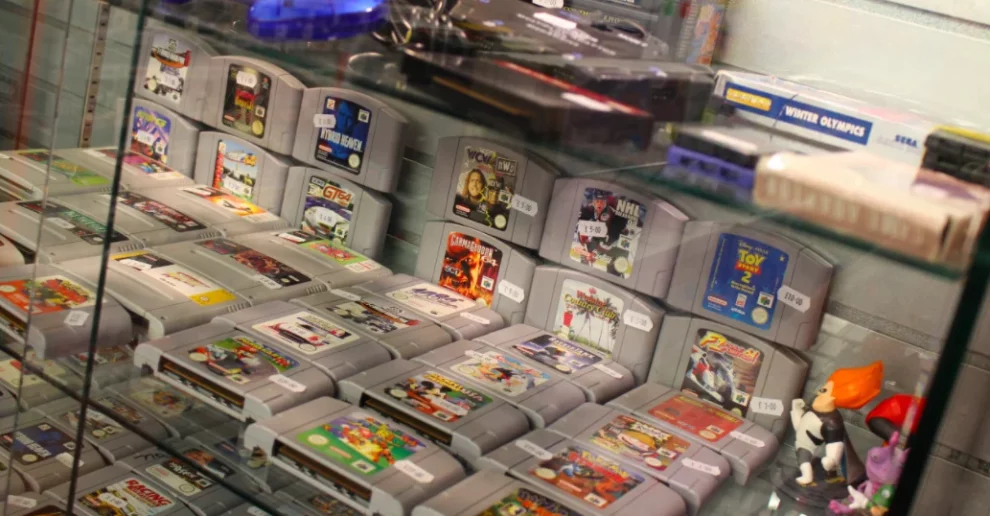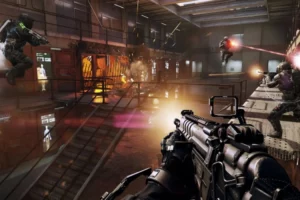In the bustling digital landscape, where new releases shimmer like holographic sirens, it’s easy to forget the treasures buried in the retro vaults. But these pixelated pioneers, the 8-bit heroes and 16-bit legends, deserve more than a dusty corner in the digital attic. Thankfully, passionate gamers and dedicated developers are wielding the twin swords of emulation and remakes to keep these classics alive, ensuring their stories continue to enthrall future generations.
Emulation: A Digital Time Machine
Emulation breathes new life into retro games by replicating their original hardware on modern systems. It’s like a digital time machine, whisking you back to the days of CRT monitors and joystick blisters. Through emulators, we can revisit childhood favorites like Super Mario Bros. or explore forgotten gems like Panzer Dragoon Saga, all without the hassle of dusty cartridges or finicky consoles.
This digital preservation isn’t just about nostalgia. Emulation unlocks new possibilities for these classics. Enhanced resolutions, save states, and even online multiplayer breathe fresh air into old lungs. Imagine battling friends in GoldenEye 007 on a modern LAN or tackling Super Metroid with crisp HD visuals – emulation makes it a reality.

Remakes: Reimagining the Past
While emulation preserves the original experience, remakes take a bolder approach. They reimagine beloved classics for modern audiences, updating visuals, mechanics, and storylines while retaining the core spirit of the originals. Shadow of the Colossus, Crash Bandicoot N.Sane Trilogy, and Final Fantasy VII Remake are shining examples of how remakes can breathe new life into aging masterpieces, captivating both veterans and newcomers alike.
But remakes aren’t without their challenges. Balancing nostalgia with innovation can be a delicate dance. Some purists lament changes to storylines or gameplay mechanics, while others celebrate the opportunity to experience these classics through a fresh lens. Ultimately, the key is to respect the legacy of the original while crafting a compelling experience for a new generation.
Preserving the Past, Inspiring the Future
Both emulation and remakes play crucial roles in video game preservation. They ensure that the history of this vibrant medium doesn’t fade into obscurity, allowing future generations to experience the groundbreaking titles that paved the way for modern gaming.
More importantly, these efforts inspire new developers. Exploring classic mechanics and innovative storytelling techniques found in retro games can spark fresh ideas and fuel the creative fires of the next generation. Through preservation, the past and present intertwine, forming a bridge that connects gaming’s rich history to its ever-evolving future.
So, next time you fire up an emulator or delve into a lovingly crafted remake, remember that you’re not just playing a game. You’re participating in a vital act of preservation, ensuring that the pixelated pioneers and polygonal heroes of yore continue to enchant and inspire for generations to come.
The History of Video Game Emulation and Preservation
Video game emulation dates back to the 1970s, when early computer enthusiasts began experimenting with replicating hardware from older consoles and arcade machines. These early efforts were crude but laid the foundation for future breakthroughs in digital preservation.
In the 1980s and 90s, emulation focused primarily on 8-bit and 16-bit consoles like the NES, SNES, and Genesis. Dedicated hobbyists spent countless hours deciphering console architectures to create programs like NESticle, ZSNES, and Kega Fusion. This “golden age” sparked growing interest in video game history and exposed countless gamers to classics they may have missed the first time around.
The 2000s brought exponential leaps to emulation capabilities. Increased computing power could now replicate 3D consoles like the Nintendo 64, Dreamcast, and PlayStation 2 at higher fidelity. And the internet provided easy distribution for emulator programs and game files known as ROMs. This improved accessibility, though it also raised complex copyright concerns that content creators still grapple with today.
Now in an era when retro nostalgia is booming, emulation plays a vital role in preservation. Hobbyists continue extracting data from aging cartridges to digitize games that may otherwise be lost to bit rot. And emulated releases allow publishers to monetize their back catalogs while exposing classics to new audiences.
Key Milestones in Video Game Emulation History
- 1978 – The Space Invaders emulator launches the emulation scene
- 1997 – NESticle sparks interest in console emulation
- 2001 – Sony’s PlayStation 2 ushers in 3D emulation
- 2008 – Nintendo launches Virtual Console utilizing emulation
- 2016 – High profile emulated releases like Rare Replay demonstrate commercial potential
The Murky Legalities Around Emulation
Copyright law casts gray shadows over the emulation scene. Dumping your own BIOS files from console hardware is generally considered legal for personal use. However, downloading those BIOS files or games (ROMs) you don’t already own toes ethical lines. Game publishers have been quick to crush sites distributing their content without permission.
On the other hand, the courts have upheld emulators themselves as legal. Sony lost an early bid to halt Bleem, a commercial PlayStation emulator for PCs. And publishers seem more lenient to non-commercial hobbyist emulators that help with digital preservation efforts.
Major players have also embraced emulation as a vehicle for monetizing back catalogs. Nintendo, Sega, SNK, Capcom and more leverage emulators to repackage classics. However, these collections typically use in-house emulators less accurate than fan creations. It’s a complex situation with divided opinions on all sides.
The Legal Gray Areas Around Video Game Emulation
- Console BIOS dumping = Legal
- Game ROMs from cartridges you own = Legal
- Downloading ROM files or discs = Illegal
- Building your own emulators = Legal
- Commercial emulator sales = Complex, but legal precedents exist
Curation Challenges for Video Game Archives
As emulation technology races forward, preservationists face the opposite issue – prioritizing what to save. We risk a digital dark age as old media decays. Cartridges wither, discs delaminate, and ancient data rusts away. Time is limited to extract and archive as much gaming history as possible.
But where to start when resources are scarce? Non-profit groups like The Strong Museum of Play, preservation societies, and fan communities take different approaches. Commercial hits seem obvious choices. But obscure gems also demonstrate advancements and influence during their era.
Documenting the context around each game also poses challenges. As veterans of the industry retire, their insights vanish. Preserving design documents, source code, music samples, and more creates richer portraits of gaming history beyond just the playable bytes.
There may be no “right” way to prioritize game preservation. But through collaboration between archives, museums, developers, and fans, we may sustain our gaming heritage for decades to come.
Prioritizing Video Game Preservation
- Preserving historically significant hits
- Rescuing obscure but influential gems
- Extracting data from deteriorating media
- Documenting developmental history and context
- Collaborating across institutions and fan communities
The Future of Video Game Preservation
Emulation and re-releases ensure the building blocks of gaming history persist. But modern titles pose fresh challenges as physical media wanes. Streamed and digital-exclusive games may simply vanish down the line once licensing deals expire. And a patchwork of clients, accounts, and DRM schemes complicates long-term access.
Solutions like GOG aim to sell restriction-free, DRM-free versions of modern titles. However, publishers control the pipelines. If source access vanishes, dedicated fans may still need to employ emulation simply to boot these games in the future.
We’ve only just begun exploring video game preservation. As gaming proliferates across various services and streaming models, sustainable archiving gets even messier. But through legal reform, standardized formats, and better public-private collaboration, perhaps future generations may also enjoy our modern masterpieces rather than just retro classics.
The pipes have already been laid – from fan emulators of Space Invaders to official re-releases of PlayStation classics. It’s up to all of us to keep the water flowing by valuing video game history as much as the cutting edge.
















Add Comment